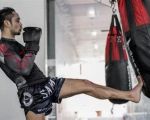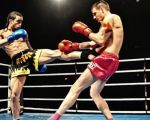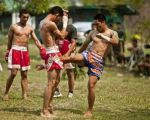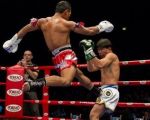When it comes to Muay Thai, one of the most important aspects of a fighter’s training routine is the warm-up. Muay Thai is a dynamic sport that demands flexibility, strength, and quick reflexes. Proper warm-up techniques not only prepare the body for the intense physical demands of training and competition but also help to prevent injuries. This article will dive deep into essential Muay Thai warm-up techniques that are crucial for enhancing performance in the ring. Whether you’re a beginner or an experienced fighter, these warm-up exercises will help you perform at your best while reducing the risk of injury.
1. Why a Proper Warm-Up Is Essential for Muay Thai
Before delving into the specific warm-up techniques, it’s important to understand why warming up is so vital in Muay Thai. The sport involves a lot of explosive movements, from powerful kicks and strikes to quick clinch techniques. If your body is not properly prepared, it can lead to muscle strains, joint injuries, and even long-term damage. A well-structured warm-up prepares your muscles, joints, and nervous system for the intensity of a Muay Thai session. It increases blood flow to the muscles, improves flexibility, and activates the muscles you’ll be using during your training. This is key in maximizing both performance and safety.
Moreover, a proper warm-up also helps to improve mental focus. Muay Thai requires a great deal of concentration and awareness, especially when sparring. Warming up can get you in the right mindset and prepare you for the mental demands of the training or fight ahead. It’s not just about physical readiness but also psychological preparedness, and that’s why dedicating time to warm up is just as important as the training itself.
2. The Role of Dynamic Stretching in Muay Thai Warm-Ups
One of the most crucial components of any Muay Thai warm-up is dynamic stretching. Unlike static stretching, where you hold a position for a long period of time, dynamic stretching involves moving your muscles and joints through their full range of motion. This type of stretching increases blood flow and helps activate the muscles that will be used during training. In Muay Thai, dynamic stretching prepares the body for powerful kicks, knee strikes, and rapid movement.
Common dynamic stretches for Muay Thai include leg swings, arm circles, and hip rotations. For example, leg swings target the hip flexors, hamstrings, and groin muscles, all of which are essential for executing high kicks and maintaining balance. Arm circles and shoulder rotations help loosen up the shoulders, which are crucial for delivering punches and defending. These movements should be done in a controlled manner, gradually increasing in intensity as your body becomes more mobile.
Incorporating these stretches into your warm-up routine will improve flexibility, prevent muscle tightness, and increase your range of motion, which is vital for executing powerful and efficient strikes in Muay Thai.
3. Cardiovascular Warm-Up: Getting Your Heart Rate Up
A proper cardiovascular warm-up is an integral part of preparing for any physical activity, especially Muay Thai. This type of warm-up increases your heart rate, improves circulation, and prepares your cardiovascular system for the intense exertion required during training. It’s crucial to elevate your heart rate gradually to avoid sudden strain on your body.
For Muay Thai, an effective cardiovascular warm-up could include light jogging, jump rope, or shadow boxing. Jump rope is particularly popular because it enhances footwork, rhythm, and coordination, all of which are essential in Muay Thai. Aim for about 5 to 10 minutes of moderate-intensity cardio to raise your heart rate and break a sweat before moving on to more intense activity.
Not only will this help prevent injury, but it also ensures that your body is primed for high-intensity movements like strikes and clinch work. It’s important not to overdo it, though; the goal is to warm up, not tire yourself out.
4. Specific Muay Thai Drills for Joint Mobility
Muay Thai involves a lot of twisting, turning, and pivoting, so ensuring your joints are prepared for these movements is essential. Joint mobility exercises target areas like the ankles, knees, hips, and shoulders, which are heavily utilized in Muay Thai. Performing joint mobility drills will help improve fluidity of movement and reduce the risk of joint-related injuries.
One of the most effective joint mobility exercises for Muay Thai is the ankle circle. This drill helps prepare the ankle joint for the heavy loads and constant shifts in position that are common in Muay Thai footwork. Similarly, hip rotations and deep squats help to loosen up the hips and knees, allowing for better flexibility when throwing kicks or transitioning between stances. Shoulder mobility exercises, such as shoulder shrugs or arm swings, help to ensure the shoulders are limber and ready for punches, elbows, and clinch work.
By incorporating these drills into your warm-up, you’ll increase your range of motion, improve movement efficiency, and make sure your joints are prepared for the physical demands of Muay Thai.
5. Mental Preparation: Focusing Your Mind Before Training
Muay Thai is not just about physical readiness; it also requires mental sharpness. Focusing your mind before training is crucial to improving your performance and reducing the risk of injury. A good warm-up routine includes mental preparation, which helps set the tone for the rest of your session.
To mentally prepare, take a few moments during your warm-up to visualize your goals for the session. Whether it’s refining your technique, improving your speed, or working on your endurance, mental focus will help you stay on track. Many professional fighters use visualization techniques before a training session or a fight to boost confidence and mental clarity.
Incorporating mindfulness or focused breathing techniques can also help calm your nerves and clear your mind, allowing you to fully engage in your training. This approach not only enhances your Muay Thai performance but also strengthens the mental aspect of your game.
6. Post-Warm-Up: Preventing Injury and Enhancing Recovery
After completing your warm-up and training, it’s important to follow up with appropriate recovery techniques to prevent injury and enhance muscle recovery. Incorporating post-training cool-down exercises and stretching helps to reduce muscle stiffness and speed up recovery time.
Static stretching, which involves holding stretches for a longer period of time, can be particularly effective after Muay Thai training. Focus on areas that were heavily engaged during your workout, such as the hips, hamstrings, calves, and shoulders. Foam rolling and self-massage can also be beneficial for releasing tension and preventing injuries.
Furthermore, staying hydrated and refueling with the right nutrients after training is crucial for muscle repair and energy replenishment. Eating a combination of carbohydrates and protein will help your body recover and rebuild muscle, ensuring that you’re ready for the next training session.
In conclusion, the right warm-up techniques are crucial for performing at your best in Muay Thai while preventing injury. By incorporating dynamic stretching, cardiovascular exercises, joint mobility drills, and mental preparation, you’ll be fully prepared for any training session or competition. Always remember, a good warm-up is an investment in your performance and longevity in the sport. Start implementing these essential warm-up techniques into your routine, and you’ll notice a significant improvement in your Muay Thai skills and overall fitness.
For more information on Muay Thai training and other fitness resources, visit Humble Challenger for expert advice and recommendations.


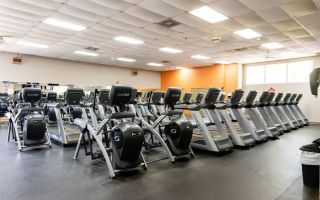












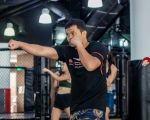


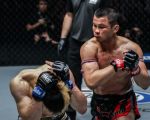

![[solidcore] Buckhead](https://img.humblechallenger.com/d43/2505/1096654875825444_150x150.webp)








